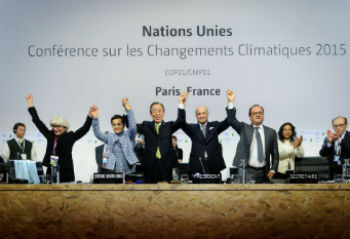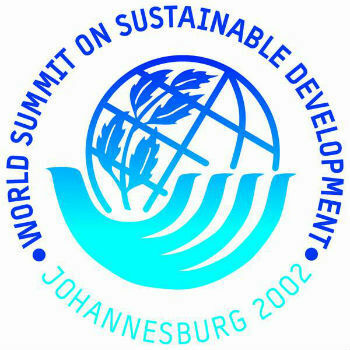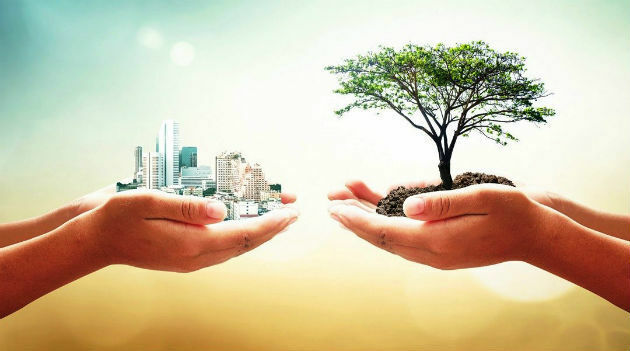Brazil is considered one of the richest countries in biodiversity. However, there are animals present in Brazilian regions that could become extinct in a few decades.
In 2016, the Chico Mendes Institute (ICMBio) and the Ministry of the Environment (MMA) released the Red Book with a list of endangered animals in Brazil.
According to the study, in the country there are 1,173 animal species threatened with extinction, in addition to those that have already been extinct, such as the small hyacinth macaw and the earthworm.
See below a list with 26 of Brazil's animals that are threatened with extinction:
1. Ararajuba
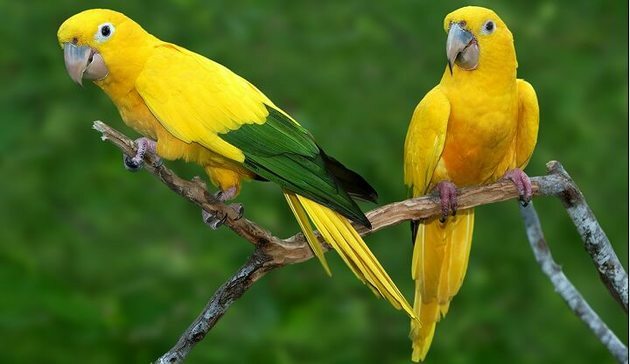
The Ararajuba (Guaruba guarouba), also known as Guaruba, is a green and yellow bird, which exists only in the Amazon and has been suffering from trafficking and deforestation in the biome.
Little is known about the habits of the ararajuba, which makes its conservation difficult. Currently, according to the ICMBio Red Book (2016), it is considered to be at risk of extinction.
2. otter

THE otter (Pteronura brasiliensis), also known as river wolf or giant otter, can be found in the Pantanal and Amazon. It is threatened with extinction at vulnerable risk, as presented by the ICMBio Red Book (2016).
Overfishing, illegal hunting and river pollution, especially mercury contamination, are the greatest threats to the species' conservation.
3. Southern Right Whale
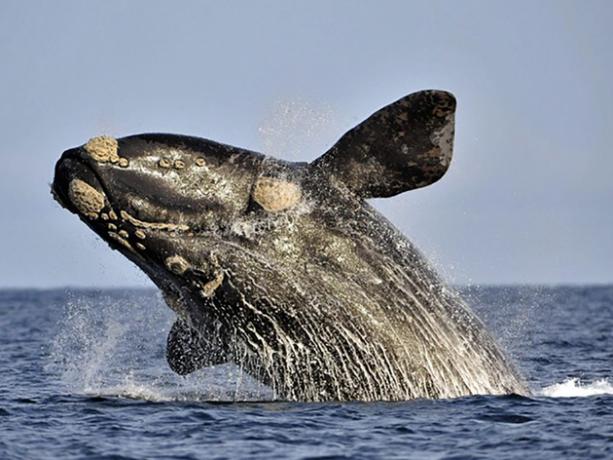
The Southern Right Whale (Eubalaena Australis), also known as southern right whale, is found on the Brazilian coast. It has been suffering from hunting, fishing, as well as water pollution.
At the time of giving birth, mothers seek warmer, shallower water to give birth. It is considered to be in danger of extinction, according to the ICMBio Red Book (2016).
4. pink dolphin

The pink dolphin (Inia geoffrensis) it is endemic to the rivers of the Amazon basin, being considered the largest freshwater dolphin and known for the legend that it seduces single girls.
The pink dolphin population has been decreasing over time, as the species has already been used as bait for fishing and, more currently, suffers from the construction of hydroelectric plants.
Researchers estimate that in about 30 years, the population of this species could decline by 50%. For this reason, it has been categorized as endangered by ICMBio (2016).
5. Wetland deer
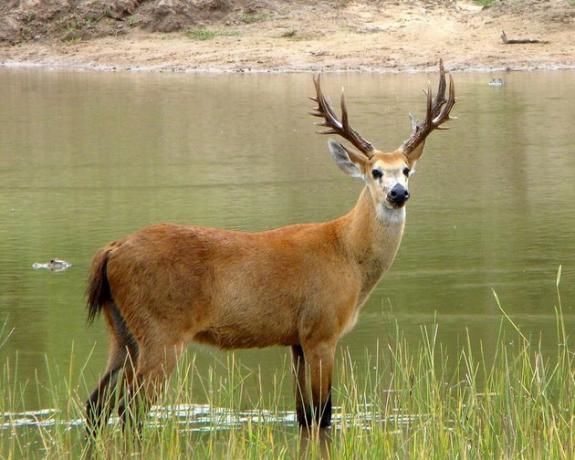
The marsh deer (Blastocerus dichotomus) is the largest deer in South America. In addition to being found in the wetland, this species also lives in the Amazon and Cerrado biomes.
Deforestation and illegal hunting are threats, in addition to the construction of hydroelectric plants in the Paraná River basin. These have contributed to the great reduction of the species, classifying it at vulnerable risk of extinction, according to the ICMBio Red Book (2016).
6. black cushy

The black cuxiú (satan chiropots) is a mammal that can be found in the Amazon.
This species of monkey has been suffering from predatory hunting and deforestation of its habitat, thus causing food shortages, since the fruits of the trees are essential for its survival.
It is currently classified as critically endangered by the ICMBio Red Book (2016).
7. margay cat

The margay cat (Leopardus wiedii) suffered for decades from hunting for the sale of his skin. It is found in the Amazon, Cerrado, Atlantic Forest biomes, pampa and Pantanal.
Currently, deforestation is the biggest problem facing the species, as it caused the destruction of its natural habitat, making it vulnerable to extinction, as pointed out by the ICMBio Red Book (2016).
8. jacutinga

The jacutinga (jacutinga aburria) is a medium-sized bird endemic to the Atlantic Forest that has been suffering from hunting and habitat loss.
In some states such as Bahia, Rio de Janeiro and Espírito Santo, it has already been extinct, being possible to find it only in the states of Minas Gerais, São Paulo, Paraná, Santa Catarina and Rio Grande do Sul.
Therefore, it is considered an endangered species, according to the ICMBio Red Book (2016).
9. Sand grenadier
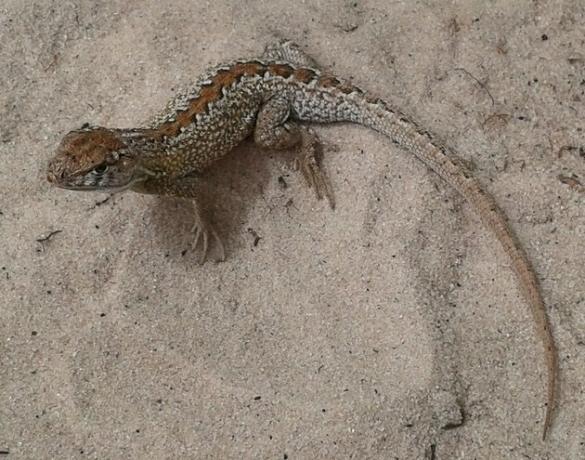
The sand lizard (Liolaemus lutzae) is an endemic species of Rio de Janeiro and has sand strips as habitat, which extend for approximately 200 km.
Urbanization is considered one of the main threats causing the species' extinction, which caused, according to ICMBio researchers, an 80% reduction in the sand grenadier population.
According to the ICMBio Red Book (2016), the species is classified as critically endangered.
10. Guara wolf

O Guara wolf (Chrysocyon brachyurus) is found in the Cerrado, the Pantanal and the Pampas. This animal is considered the largest canid mammal native to South America.
The species faces major problems due to deforestation of its habitat and is vulnerable to extinction, according to the ICMBio Red Book (2016).
11. black-faced spider monkey

The black-faced spider monkey (Atheles Chamek) is found mainly in the Amazon. Among the threats to its conservation are: the destruction of its habitat, illegal hunting and animal trafficking.
The construction of hydroelectric plants, highways and transmission lines are the main reasons for the species is considered to be at vulnerable risk of extinction, according to the ICMBio Red Book (2016).
12. Golden Lion tamarin

O Golden Lion tamarin it inhabits the Atlantic Forest and suffered for decades from deforestation and animal trafficking, which resulted in the almost total elimination of the species.
Today, the few individuals that exist are restricted to the remnants of forests in the state of Rio de Janeiro.
With the support of projects in the conservation units where they are located, the situation tends to improve. However, the species is still classified as endangered, according to the ICMBio Red Book (2016).
13. savannah bat

The savannah bat (Lonchophylla dekeyseri) is a small animal, weighing about 12 grams and is an endemic species to the Cerrado. He lives in caves and holes in the woods and cerrado of Brazil.
The reduction of its habitat, mainly caused by deforestation, disorderly tourism and environmental degradation, are the main causes of extinction threat of the species, which is classified as endangered by the ICMBio Red Book (2016).
14. northern muriqui
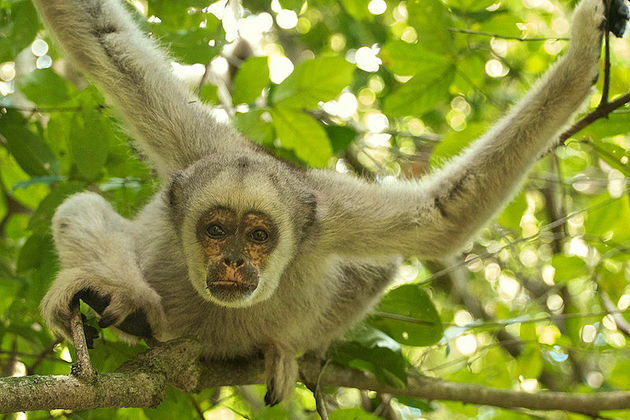
The northern muriqui (Brachyteles hypoxanthus) is the largest primate in the Americas, being found only in the Atlantic Forest. The species suffers from deforestation in the region and illegal and indiscriminate hunting.
According to the ICMBio Red Book (2016), it is classified in the category of critically endangered.
15. Jaguar

THE Jaguar (panthera onca) is considered the largest feline in the Americas, and can be found in almost all Brazilian biomes, with the exception of the Pampa, where it has already been extinct.
This species of jaguar is hunted by farmers to protect their herds, in addition, it suffers from the destruction of its habitat and its skin has great value in the world market.
According to the ICMBio Red Book (2016), the jaguar is classified at vulnerable risk of extinction.
16. Yellow Woodpecker

The yellow woodpecker (Celeus flavus subflavus) is an endemic bird of Brazil, being originally found between the states of Alagoas to Rio de Janeiro.
However, the most recent records indicate the incidence of this animal only in specific locations in Bahia and Espírito Santo.
This bird, according to the ICMBio Red Book (2016), is classified as critically endangered. Researchers point to the existence of approximately 250 individuals today.
The main threats are related to the quality of its habitat, which is influenced by deforestation and fires.
17. military exit

The military exit (Tangara cyanocephala cearensis) is a bird found in the Atlantic Forest. It has strong colors and the great problem faced by the species is the deforestation of the regions and the trafficking of animals.
Currently, according to the ICMBio Red Book (2016), it presents a vulnerable risk of extinction.
18. leaf toad

The Leaf Toad (Proceratophrys sanctaritae) is an endemic species from Brazil, scientifically described for a short time and which is already in danger of disappearing. It was discovered in 2010 in Serra do Timbó, in the state of Bahia.
The species suffers from deforestation of its habitat due to the cultivation of cocoa, bananas and pastures. Currently, according to the ICMBio Red Book (2016), it is classified as critically endangered.
19. Araripe soldier
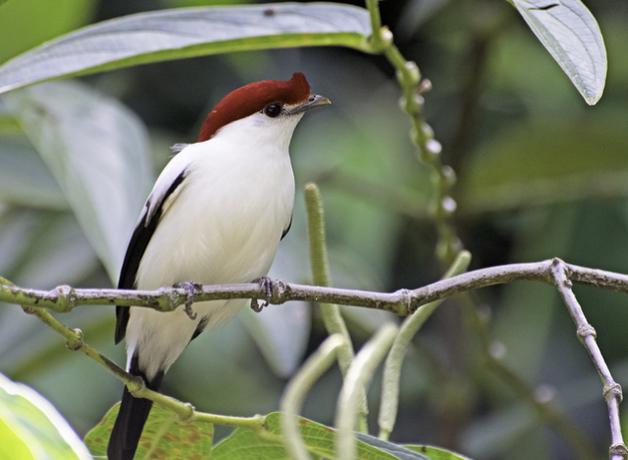
The Araripe Little Soldier (Antilophia bokermanni) is a bird that lives in the caatinga, in a restricted area of Chapada do Araripe, in Ceará.
It has been suffering from the problem of deforestation in the region, caused by cattle raising, monocultures and the disorderly growth of cities.
According to the ICMBio Red Book (2016), the species is classified as critically endangered.
20. giant anteater

O giant anteater (Myrmecophaga tridactyla) is found in the Amazon, Cerrado, Atlantic Forest and Pantanal biomes.
It has been suffering from deforestation and burning in regions destined for plantations or cattle raising.
Because of these actions, the species is vulnerable to extinction, according to the ICMBio Red Book (2016).
21. Leather turtle

THE leather turtle (Dermochelys coriacea) is considered the largest species of sea turtle in the world.
It is found in tropical and temperate oceans. In Brazil, regular spawning takes place on the north coast of Espírito Santo.
The consumption of eggs and the slaughter of females was very common in the past, and their reproductive characteristics contribute to putting the conservation of the species in a critical situation.
In some countries, the consumption of meat and oil from this animal is legal. According to the ICMBio Red Book (2016), the species is classified as critically endangered.
22. olive turtle

The Olive Turtle (Lepidochelys olivacea) is a highly migratory species, which spawns mainly between the southern coast of Alagoas and northern Bahia.
Like the leatherback turtle, it also suffered from egg collection and slaughter during the spawning period, which has decreased due to many conservation projects.
The species still faces problems such as illegal hunting, accidental fishing and water pollution, causing thus the risk of extinction, which according to the ICMBio Red Book (2016), is classified in the category in danger.
23. armadillo ball
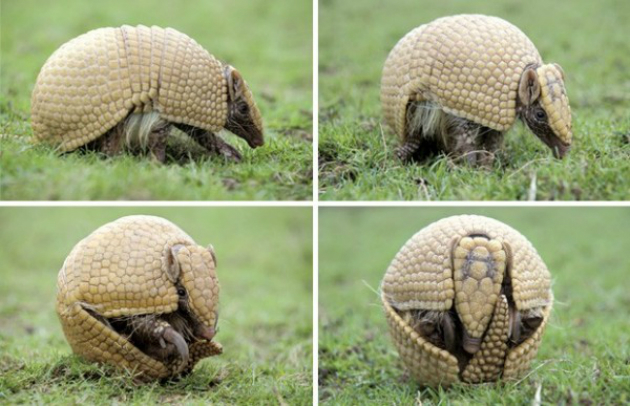
The armadillo (Tricinctus tolypeutes) is an endemic animal of the Caatinga, that is, it is most commonly found in this biome. Researchers point out that the population of this species has already decreased by about 45% in a period of 20 years.
The main reasons why this animal is considered at risk of extinction are environmental degradation and hunting. According to the ICMBio Red Book (2016), the species is categorized as endangered.
In 2014, he was considered the mascot of the soccer World Cup that took place in Brazil.
24. porpoise

The porpoise (Pontoporia Blainvillei) is a dolphin that can be found in the coastal region of Brazil, Uruguay and Argentina, passing through the coast of Espírito Santo to Rio Grande do Sul.
The capture of the species in fishing nets and the low reproduction capacity, make the porpoise to be considered critically endangered in Brazil, according to the ICMBio Red Book (2016).
25. uacari
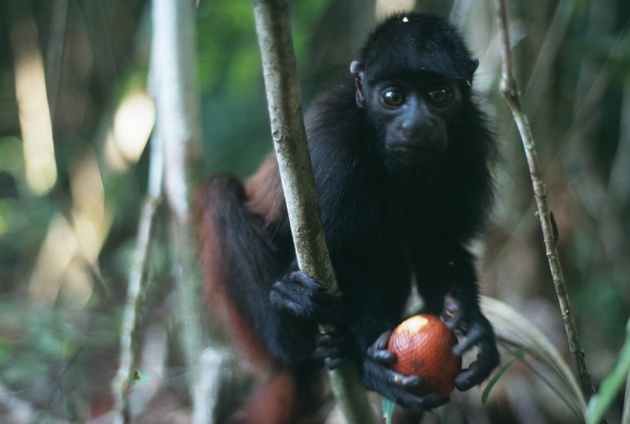
the uacari (Hosomi cacajao) is found in the Amazon and has been suffering from deforestation in the region and hunting, as it inhabits indigenous lands of the Yanomami.
According to the ICMBio Red Book (2016), the species is classified as endangered.
26. Northwestern Blue Crowned Udu
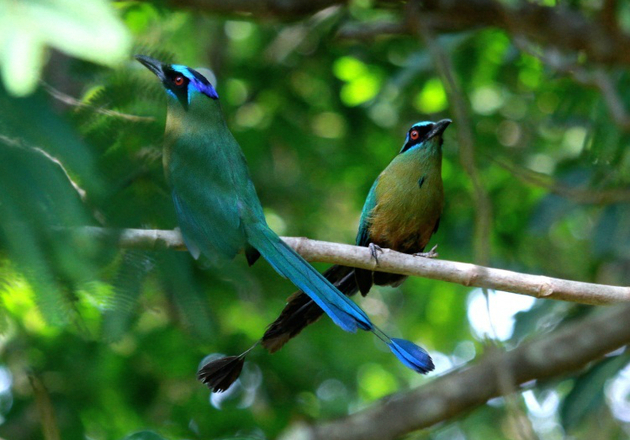
The blue-crowned udu (Momotus momota marcgraviana) is found in the Amazon, Pantanal and Atlantic Forest biomes.
This multicolored bird has been facing problems with the loss of its habitat due to deforestation in the regions.
Currently, according to the ICMBio Red Book (2016), the species is classified as endangered.
Classification of endangered animals
To classify the level of danger of extinction for animals, ICMBio adopted the standard used by the International Union for Conservation of Nature (IUCN).
Thus, three major categories are considered, composed of other subcategories:
- Extinct: extinct and extinct from nature;
- threatened: vulnerable, endangered and critically threatened;
- Low risk: conservation dependent, almost threatened, of little concern.

